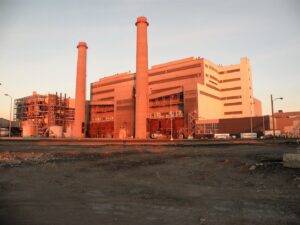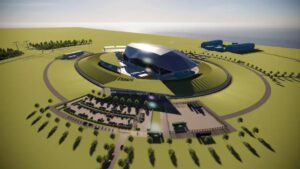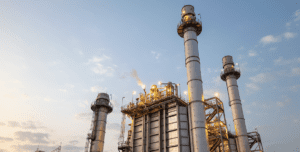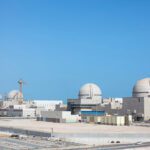At the 2023 United Nations Climate Change Conference (COP28) in Dubai, United Arab Emirates, last December, 25 countries underlined the role of nuclear energy in their climate strategies by issuing a “Declaration on Tripling Nuclear Energy by 2050.” The U.S. was among the countries endorsing the declaration, which recognizes the key role of nuclear energy in achieving global net-zero greenhouse gas emissions by 2050 and keeping a 1.5-degree-C limit on temperature rise within reach. The declaration also highlighted the need for secure supply chains and encouraged shareholders of the World Bank, international financial institutions, and regional development banks to include nuclear energy in their lending policies.
Sourcing capital for any mega project is difficult, but getting financial institutions to back nuclear power projects can be particularly challenging. As William D. Magwood IV, director-general of the Organisation for Economic Co-operation and Development (OECD) Nuclear Energy Agency (NEA), wrote in the Foreword of the agency’s recently released “Effective Frameworks and Strategies for Financing Nuclear New Build” report, “mobilising investments in nuclear energy is further complicated by the recent track record of nuclear new build projects that have faced significant costs overruns and delays.”
Interest Rates Massively Affect Cost
Magwood further noted, “Undoubtably, financing, alongside supply chain readiness and workforce, is one of the most pressing challenges that countries around the world must address to succeed with plans for new nuclear energy projects.” Financing conditions impact the levelized cost of electricity (LCOE) through the cost of capital, ultimately influencing the competitiveness of new nuclear power plants.
The NEA report notes that LCOE for new nuclear power plants is particularly sensitive to the cost of capital, owing to the importance of fixed investment costs relative to variable costs, and the long construction period. An example was presented in which financial costs accounted for two-thirds of the costs of nuclear electricity when the cost of capital was 9%, but dropped to less than one-third when the cost of capital was lowered to 3%.
The report provides eight case studies, taking stock of the range of financing frameworks and strategies that have been recently implemented or are presently under consideration for nuclear new-build projects around the world. The NEA said its objective was “to establish a common vocabulary and the basis for comparative analysis to identify and discuss key lessons learnt about the relative merits of different strategies for financing nuclear projects.” Projects analyzed in the report included Vogtle 3 and 4 in the U.S., Olkiluoto 3 in Finland, and the Barakah plant in United Arab Emirates, among others.
Key Insights on Nuclear Financing Frameworks
The nuclear financing case studies identified four key insights on the drivers and features of different financing frameworks. The NEA said these should be carefully considered upfront for all future nuclear energy projects. The notable findings were:
- ■ Financing frameworks are deeply intertwined with national and industrial contexts. From a policy perspective, this means that lessons learned need to be contextualized before they can be transferred to another setting. “To do so requires a solid understanding of how a financing framework connects to policy and industrial environments,” the report says.
- ■ A long-term national commitment to nuclear energy and strong upfront project planning are necessary conditions for devising and implementing successful frameworks for nuclear financing. However, systemic project issues may need to be addressed before a final investment decision can be reached.
- ■ De-risking construction is key to attracting additional sources of funding and to reducing the cost of capital. Project developers must try to mitigate risks before construction and have the ability to absorb them during construction. Ultimately, all risks are largely born by ratepayers and/or governments, which are best able to absorb low-probability risks with high impacts, such as construction cost overruns.
- ■ Aligning stakeholders’ interests must be an overarching objective. Nuclear energy involves significant financial, safety, environmental, and geopolitical considerations, making it necessary to engage stakeholders, including governments, safety authorities, local communities, and investors, over a long period. While a key aspect of nuclear financing frameworks is to formulate clear decisions about risk allocations, this process should be implemented in a way that keeps in sight the need to ultimately align stakeholders’ interests through efficient contracting.
Banks and Financial Institutions Signal Support
World Nuclear Association noted that 14 financial institutions expressed support for nuclear power while representatives were in New York City for Climate Week NYC, an event that included more than 600 activities spread across the city during the last week of September. World Nuclear Association said, “The financial institutions recognized that global civil nuclear energy projects have an important role to play in the transition to a low-carbon economy. They further expressed support for long-term objectives of expanding nuclear electricity generation and the broader nuclear industry to accelerate the clean energy transition.” The group of financial institutions that signaled their support were Abu Dhabi Commercial Bank, Ares Management, Bank of America, Barclays, BNP Paribas, Brookfield, Citi, Credit Agricole CIB, Goldman Sachs, Guggenheim Securities LLC, Morgan Stanley, Rothschild & Co., Segra Capital Management, and Societe Generale.
—Aaron Larson is POWER’s executive editor.











